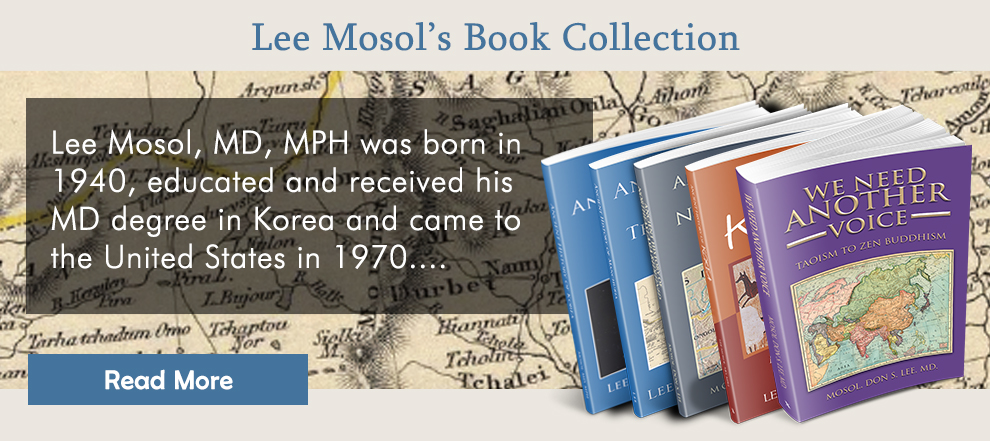진-한(秦漢) 혼란기 선사 시대 부터 중원 땅에 예맥 (濊貊. 斯)이라 살았다. 산서성(山西省, 隸省)에 있던 제후국 진(晉) 나라가 “조위한 趙 魏 韓”셋 으로 분열 되여 이때 부터를 전국 시대 (戰國時代,기원전 476년 또는 기원전 403년 ~ 기원전 221년 )라 한다. 전국칠웅이 다투던 중원을 진 시황제(秦始皇帝)이 기원전 221년에 통일 했다. 맹자(孟子; 기원전 372년?~기원전 289년?)가 양혜왕(梁惠王) 을 만나 대화를 했다. 그 무덤이 279년에 도굴했다. 모두위나라 역사서 (蓋魏國之史書)라 했다. 발굴된 죽간 문헌에 “益乾啟位, 啟殺之”란 문구가 나타나 우(禹)의 아들 개 (帝啟)…..
아로자등묘(阿鲁柴登墓) 아루 차이덴의 무덤-1 아로자등묘(阿鲁魯柴登墓)이란 서쪽에서 온 융족 (羌:西戎) 부풍 (扶風)출신, 세 지도자의 한 사람 (參也魯) 이 었던 루/로(鲁魯)의 무덤에 향불을 피워 제사를 지내던 언덕]이란 뜻이 있다. [1] 부풍에서 동남 쪽으로 나와 공자와 맹자의 고향인 노(魯)나라가 생겼다. [2] 공자의 사위 공야장 (公冶萇)이 현명하여 새들의 이야기를 이해 했다고 한다. 중앙 아시아에서 온 삼족오를 숭상하던 오손(烏孫)족이란 뜻이다. 그 옆에는 강태공을 시조로 하는 제 나라가 있다. 금관이 발굴된 곳은 금미달 영역으로 판정된 지역 서부가 된다. 고전에 실린 부풍 (扶風)이란 [단군조선 지역에 들어와…..
재미 한인으로서 도산 사상의 실천적 방안 구한 말 민족의 선구자 도산(島山), 안창호(安昌浩, 1878년 ~ 1938년)는 안중근 (安重根, 1879년~1910년)의사와 동본 동년배셨다. 도산 사상의 실천은 현대 교육 탈 봉건 제도. 자주 독립으로 요약 된다. 국 내외 여러 사람들이 노력 하여 자주 독립은 하였지만 많은 영토를 잃어 버리고 나라는 두동강이 났다. 시대는 변한다. 배가 태풍을 만나 항해를 하듯, 주위 환경에 따라 때때로 방향을 바꾸어야 한다. 그러나 목적지는 변할수 없다. 우리는 동양 최초의 국가 조선 (朝鮮)이란 이름을 유지 하고, 개천절 (開天節) 행사를…..
고조선(古朝鮮), 단군조선의 수도 아사달 (阿斯達) 금미달(今彌達) 순서: 1. 어떻게 찾았나? 2. 단군(壇君)조선 개국 설화. 3. 사료의 신빙성: 고조선 의 탄생 시대와 장소-孟子. 5. 황제(黃帝)와의 전쟁. 금미달(今彌達)의 위치. 7. 신미제국(新彌諸國) 20여국. 8. 결론: 어떻게 찾았나? 왜 못찾았나? 찾는 방법이 틀려 못찾고 포기. 상식적 판단이 찾는 방법의기초. 기록(SMa-In, Out) 찾고 찾고 또 찾아-연구硏究. 절차적 삼단논법. 어부, 사냥꾼, 강력범 수사 등등. 모두 상식적 판단에서 시작. 역사학은 모든 이문 사회 과학의 모체다. 학문은 연구를 해야 진전. 그림글자로 기록된 동북아 상고사:…..
가야국 가실왕(加耶國嘉悉王) 이전 왕이 마지막 단군이다. 봄 춘 기: 고려시대 가요 “가시리”의 유래 삼국유사에 이르기를 고조선의 마지막 수도 금미달 (今彌達)을 떠난 단군 가문이 나라를 다스린지 1500년이다. 아사달에 돌아가 산신이 되었다.[1] 천독 (天毒; 천독 애비, 천또깨비)이 다스리던 고조선의 수도가 상나라 이전 부터 북쪽에 있었다는 기록이 산해경과 상서 미자편에 있다. 논어에 당우지제 어시위성 (於斯為盛)이라, 즉 예맥족(斯, 濊貊)이 요순 시절부터 황하문명 발상지에 살았다.[2] 환웅의 아들이 그곳에 뜻이 있어 내려와 고조선(意在斯焉古朝鮮)을 세웠다. 그 곳이 사마천의 고향이다. 중원 세력은 가상인물 황제를 홍수를…..
고조선 마지막 수도 금미달 (今彌達)-2 高麗本孤竹國 지난 번에는 처음으로 “고조선의 마지막 수도 금미달”을 간략히 설명 했습니다. 장구한 시대에 걸처 아시아전역에 흐터져 있었던 예맥(濊貊, 斯)족의 역사에 관한 총괄적 개론(Introduction; Opening remark) 이었습니다. 이는 미국에서 40평생을 의과 대학에서 보내면서 뼈저리게 느껴 재야 사학가로서 변신 하여 잃었던 한국 상고사를 되찾아 가는 경과 보고 “Research in Progress” 라 새로운 학설 입니다. 그러다 보니 친구가 없습니다. 생을 즐겨야 할 팔순 나이에 참으로 “외로운 여정”을 걷고 있습니다. 많은 재야 사학가들이 활동 하지만 필자는 아직 벗을 찾지…..
Silla from Zhina (Southern China) to Korean Peninsula 백제 부용국 신라가 대만섬에 있었다 봄 춘 기: 간략 소개 한반도를 통일한 신라( 新羅)는 옛부터 여러 글자로 기록 되었다. 광개토대왕 비문에 실린 신라 임나 가라(新羅 任那加羅) 와 같은 글자가 남조 역사서에 있다. 이를 왜왕 (倭王)이 다스렸다고 했다. 사기 평준서 (平準書)에 실린 창해지군 (滄海之郡) 지역을 광개토대왕이 정벌 했다. 전국시대에 고조선의 마지막 수도 금미달(今彌達)이 침략을 받아 셋으로 분산 되었다가 진시황 때에 완전히 정복 되었다. 그곳 난민들 (濊貊, 斯 )이 발해만으로 내려와 여러…..
필자는 부여의 어원과 발생지는 황하문명 발생지에서 나타났다고 여러번 설명 했다.[1] 산해경에는 호부여지국 (胡不與之國)이 실렸다. 서쪽에서 온 <오환족(烏孫, Scythian) 으로 그 일대에 살던 사람들과는 다른 떠돌이> 라는 뜻이다. 시경 조풍에 부유(蜉蝣) 편명이 있고, 순자에는 부유작시 (浮游作矢)라고 했다. 떠돌이 방랑자란 뜻이다. 이들이 단군왕검이 피살 당하자 분산되여 한부류는 북쪽으로 밀려 갔다. 남쪽으로 피해 갔던 사람들이 토속 신앙을 인도 동북쪽에 전하여 원시 불교가 나타났다. 원시 불교가 전국시대에 금미달 지역(燕都)에 들어 왔다. 그곳에서 신라의 초기 이름 시라(尸羅 斯羅)가 나타났다. [2] 금미달에 살던 단군이…..
옥새(玉璽)의 유래: 개요 Abstract 동양 문화권에서는 옛적 부터 도장 (圖章)인(印)을 써 왔다. 특정 영역의 최고 집권자가 쓰던 도장을 국인 國印),국새 (國璽), 또는 옥새(玉璽) 라고 했다. 중원을 다루던 황제의 옥새를 전국 새 (璽), 그 전에는화씨벽 (和氏璧)이라고 했다. 옥새(玉璽) 의 발원지를 동양 고전에서 찾아 보았다. 필자는 여러 차례에 걸쳐 동양에서 아직도 쓰고 있는 [번체자(繁體字) 라고 부르는 상형 글자는 漢字가 아니라 韓字로 기록 함이 옳다]고 했다. 그 확실한 증거를 “삼한 (三韓)땅 청구(靑丘)의 새로운 고찰”에서 밝혔다. 옥새를 뜻한 둥근 옥 벽 (璧) 또한 황제가…..
삼신삼 불로초 의 대명사 영지버섯 한글 위키에서 “푸를(靑)를 설명한 내용은 해지 연안에 살았던 휴자(攜, xié 子),즉 “𣫴, xié/시애/쉐”로 읽던 글자다. 그 후손이 분수 계곡을 따라 올라가서 살던 지역에 마지막 수도 금미달이 있었다. 그 지역 청구(靑丘) 에서 황제가 자부선인(紫府仙人)으로 부터 삼황내문 (三皇內文) 을 받았다. 청구(靑丘)란 글자는, 삼국사기에 “靑丘之表,靑丘道行軍” 실렸다. 고구려 멸망이후 안승을 책봉 하며 내린 문구에“우풍진 어청구 威風振於青丘, 즉 위풍이 청구에 떨쳤다”. 옛적 고구려 땅을 청구라 했다. 두 글자 사용의 한계가 모호하다. 답이 삼국 유사에 있다. 모두 청구 소문(青丘沙門)…..
Recent Posts
Recent Comments
- Don S. Lee MD on 부여의 시말:
- Seowa etymologist on Silla from Zhina(Southern China) to Korean Peninsula.
- James Kim on 약우 (若愚)
- James Kim on 약우 (若愚)
- James Kim on 약우 (若愚)
Archives
- May 2024
- February 2024
- October 2023
- August 2023
- June 2023
- May 2023
- March 2023
- February 2023
- January 2023
- August 2022
- July 2022
- April 2022
- March 2022
- January 2022
- December 2021
- November 2021
- October 2021
- September 2021
- August 2021
- July 2021
- June 2021
- March 2021
- February 2021
- January 2021
- December 2020
- November 2020
- October 2020
- September 2020
- May 2020
- April 2020
- March 2020
- February 2020
- January 2020
- December 2019
- November 2019
- October 2019
- September 2019
- August 2019
- July 2019
- June 2019
- May 2019
- April 2019
- February 2019
- January 2019
- December 2018
- November 2018
- October 2018
- September 2018
- July 2018
- March 2018
- February 2018
- December 2017
- November 2017
- October 2017
- September 2017
- August 2017
- July 2017
- June 2017
- May 2017
- April 2017
- March 2017
- February 2017
- January 2017
- December 2016
- November 2016
- October 2016
- September 2016
- August 2016
- July 2016
- June 2016
- May 2016
- October 2015
- September 2015
- July 2015
- May 2015
- April 2015
- November 2014


